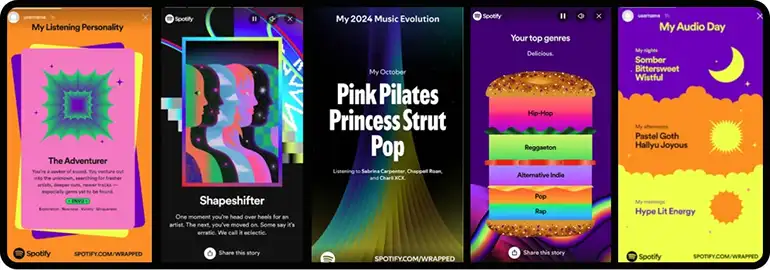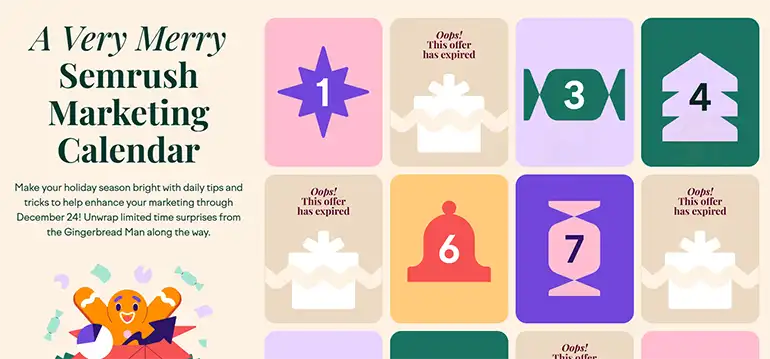Christmas isn’t just a marketing season. It’s a collective ritual of memory, generosity and connection. Every November and December, inboxes and feeds light up with jingles, jumpers and “exclusive 24-hour offers” that mysteriously last three weeks. Yet only a handful of brands truly strike the right emotional chord. The secret lies in understanding the psychology behind why Christmas marketing works.
The origins of festive advertising
Long before digital campaigns and data dashboards, Christmas advertising began with storytelling. From early department-store catalogues to the first TV adverts, brands used the festive period to connect emotionally rather than purely commercially. These early campaigns built strong associative memories linking Christmas with comfort, generosity and joy (Belk, 1987).
That emotional framing still underpins the most effective campaigns today—even when delivered through AI-driven personalisation or automated email marketing. The medium may have changed, but the message—warmth and wonder—has not.
Nostalgia: priming positive intent without over-doing it
Nostalgia activates the brain’s reward and comfort centres, increasing positive sentiment and brand trust (Muehling & Pascal, 2011). It makes people feel grounded even when the economy (and their inbox) feels a bit wobbly.
Used with restraint, it can prime customers for action without tipping into syrupy sentimentality. Instead of the usual grand snow-scene, marketers can evoke nostalgic cues in more grounded ways:
- Reference shared office rituals (“the annual mince-pie debate”).
- Use memory-driven subject lines (“Remember your first Christmas campaign win?”).
- Or nod to collective professional moments (“That time your CRM kept your Boxing Day sales on track”).
Think gentle nostalgia, not Hallmark-movie monologue. A wink, not a weep.
Example: Spotify Wrapped turns user listening data into a nostalgic reflection of the year—inviting users to relive their music journey, share it, and feel seen. It’s a masterclass in memory-driven marketing and personal storytelling.
Humour and clarity: a festive balancing act
Humour increases message recall and emotional contagion (Hatfield, Cacioppo & Rapson, 1994), which helps campaigns cut through crowded inboxes. Yet research shows clarity on benefit and offer is required to drive conversion (Heath & Nairn, 2005).
So: make them smile, but make it clear why they should click.
- Play with contrasts (“Data lists are the new wish-lists”).
- Exaggerate reality (“Your open-rate is higher than your fairy lights”).
- Stay purposeful (“Keep calm and carry on automating (responsibly)”).
Good humour is situational, not slapstick. And please, no puns about “sleighing your targets” unless you can back it up.
Example: Innocent Drinks – “A Jolly Safe Christmas” (BMB, 2020)
A playful, tongue-in-cheek campaign addressing lockdown life with a “Santa Safety Suit” and mock children’s storybook. It blended festive humour with real-world empathy—staying true to Innocent’s warm, witty tone.
See the campaign on BMB Agency
Authentic storytelling starts with real moments
Authenticity is the most underrated gift you can give your audience. The self-determination theory (Deci & Ryan, 1985) suggests people are drawn to communications that feel autonomous, competent and connected. In marketing terms, that means rooting messages in genuine customer moments—not contrived “festive feelings” from a stock-photo library.
Show how your brand played a meaningful role:
- A tech supplier that helped retailers while shelves emptied.
- A logistics company sharing how it shipped millions of orders on time.
- Or a higher-education partner celebrating student campaigns that made a difference.
When stories feel earned, people respond. It’s the difference between “Merry Christmas” and “We value what you achieved this year”.
Example: John Lewis – “The Beginner” (2022)
A heartfelt story of a foster parent learning to skateboard before welcoming his foster child. It’s storytelling that prioritises humanity over product—and reflects real values of care and inclusion.
B2B SaaS example: Semrush – “Holiday Marketing Calendar”
Even in the SaaS world, Christmas campaigns can connect emotionally when they mix usefulness with creativity.
- Concept: Semrush launched an interactive Holiday Marketing Calendar offering daily SEO and content tips, downloadable templates, and light-hearted festive assets for marketers.
- Tone: Supportive, practical and subtly playful—positioning Semrush as a partner helping marketers “finish the year strong”.
- Why it works: It tapped into reciprocity theory (Cialdini, 2006)—offering real value first, which in turn nurtures loyalty and brand affinity.
- Psychology at play: Gratitude and competence. By empowering users to plan smarter, Semrush evoked positive reinforcement rather than direct persuasion.
Takeaway for SaaS marketers: Use the season to offer clarity, calm and capability. A campaign that genuinely helps your audience reach year-end goals builds stronger retention than any discount ever could.
The takeaway: meaning beats decoration
The psychology of Christmas marketing isn’t about red ribbons or perfectly lit trees. It’s about using memory, humour and authenticity to foster connection. When done right, your campaign doesn’t just sell—it reminds your audience why they liked your brand in the first place.
So this year, think beyond the baubles. Tell a story they’ll remember—and a benefit they’ll act on. And if in doubt, keep your jokes brief, your offers clear, and your tinsel well away from the CTA button.
References
- Belk, R. W. (1987). A Child’s Christmas in America: Santa Claus as Deity, Consumption as Religion. Journal of American Culture, 10(1), 87-100.
- Muehling, D. D., & Pascal, V. J. (2011). An Involvement Explanation for Nostalgia Advertising Effects. Journal of Promotion Management, 17(1), 87-101.
- Hatfield, E., Cacioppo, J. T., & Rapson, R. L. (1994). Emotional Contagion. Cambridge University Press.
- Heath, R., & Nairn, A. (2005). Measuring Affective Advertising: Implications of Low Attention Processing on Recall. Journal of Advertising Research, 45(2), 269-281.
- Deci, E. L., & Ryan, R. M. (1985). Intrinsic Motivation and Self-Determination in Human Behaviour. Springer.
- Cialdini, R. B. (2006). Influence: The Psychology of Persuasion. Harper Business.





